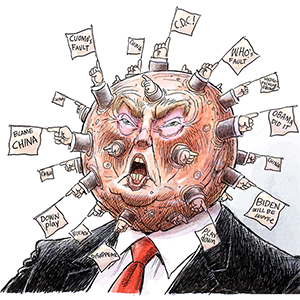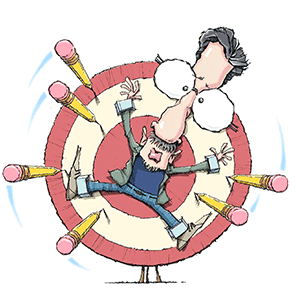If the Eagles lose against the Cowboys, blame the kelly green jerseys
Published in Football
PHILADELPHIA — George Allen told the Eagles during a visit to training camp in the summer of 1980 that their talent was just enough to win four or five games. But the legendary NFL coach saw enough during his week in West Chester to also tell the Birds that their work ethic would push them even further.
So when the Eagles reached the NFC championship, Dick Vermeil made sure to invite Allen into the locker room before the game. It was a chance for Allen, who was at Veterans Stadium as a CBS broadcaster, to see the guys he believed in months earlier.
“When the players ran onto the field to get introduced, he was standing in the tunnel,” said Vermeil, who worked under Allen with the Rams. “He signaled for me to come over and he said, ‘Coach, I have never seen a team more ready to play. There is no way Dallas is going to beat you today.’ That’s exactly what he said to me.”
Allen was right, as the Eagles stormed past the rival Cowboys to reach their first Super Bowl. But what Allen didn’t know is that the Birds were wearing the right color: white. Vermeil made the call that week to swap green jerseys for white, which forced Dallas to wear the blue tops that were becoming a topic in Texas.
“We heard they didn’t like to wear them,” Vermeil said. “We had the choice of what color to wear. I don’t think it made any difference in the outcome of the game, but at least going into the game, it was a media point and something that we could talk about. Maybe force them to play in the color that they would rather not play in.”
The game started a tradition for the Birds, who wore their white tops — usually reserved for road games — at home 10 times against Dallas in the next 15 seasons. It added a little color to an already fierce rivalry. But on Sunday, the Eagles will wear kelly green jerseys at home against Dallas, something they rarely did before the color was retired in 1996.
Dallas remains a rival, but the feud doesn’t sizzle the way it did in the 1980s and 1990s. It took the Eagles 21 years before they reached another NFC championship game and they lost their next five postseason games after that freezing win over Dallas. The Eagles didn’t play for Super Bowls, but they did get two dates a year with the Cowboys, and each one felt like the game. So the Eagles made sure their colors were right.
“When I got here, what Dallas meant to the Eagles was a defeat,” Vermeil said. “We made Dallas our focal point for concentration. Our offseason work, our training work, we talked about becoming good enough to beat Dallas. We always felt like if we could beat Dallas, then the other teams would fall in line as well because Dallas was already beating those guys as well. That was the approach.”
Blue jersey jinx
The Eagles did not wear white at home for five years before they sent a telegram in January 1981 to Dallas general manager Tex Schramm, informing him that the Birds would be in white for the NFC championship game.
The “blue jersey jinx” had been a thing in Dallas ever since the Cowboys faltered in Super Bowl V against Baltimore. The Cowboys wore white at home, so they rarely had to wear their blue jerseys. But opponents started catching on and wore white at home against Dallas, which forced them to wear blue.
“I would hope we never get to the point where we would be concerned about what color jerseys our opponents wear,” Schramm told the Daily News before the game. “I’m glad that’s the Eagles’ top priority. I’m glad that’s all they have to think about with an NFC championship game coming up.”
The Cowboys beat the Eagles nine straight times before Vermeil’s squad won in Dallas in 1979 on Monday Night Football. It was now officially a rivalry.
The Eagles won again the next October before losing in December 1980 in Dallas. But the Eagles rallied in the second half to lose by just eight points, which meant they won the NFC East despite the loss. The Cowboys were peeved when quarterback Ron Jaworski celebrated a fourth-quarter field goal that edged the Eagles within 15 points as he knew the division was secure.
It was no secret that the teams didn’t like each other. And that division title allowed the Eagles to host the NFC championship, meaning they had the choice of uniform tops. Of course, the Eagles made Dallas wear blue.
“That’s what we did,” Vermeil said. “It was just another thing to add to the rivalry. I don’t know if it made any difference to the winning or losing. It didn’t make one block, one tackle, one throw, or one reception. But the overall addition to the preparation, it just adds another focal point.”
Stop ’em again
The Eagles mostly followed Vermeil’s tradition after he left and usually opted against wearing kelly green at home against Dallas. They wore green at home in 1994 and lost by 12 points as their season spiraled. A year later, the Birds were pushing for a playoff berth with first-year coach Ray Rhodes, and Dallas was coming to town. There was no chance the Eagles were wearing green.
“There was something about that white jersey that made the Cowboys look so much better,” said Kurt Gouveia, a linebacker on the 1995 Eagles. “It kind of made them a little softer. Maybe they weren’t the same team.”
The Eagles and Cowboys remain rivals, but the games don’t feel like they did at the Vet. The Cowboys haven’t won a divisional playoff game since 1995 and have won three playoff games in the last decade. It’s a rivalry, but the Cowboys are not revered the way they were when kelly green was not a throwback. But in November 1995, Dallas was America’s Team.
“It was so true,” Gouveia said of the rivalry. “The Washington Redskins hated the Dallas Cowboys, and I know the Cowboys hated the Redskins. When I went to the Redskins, they taught me to hate the Cowboys and be ready to get into a bar fight with the Philadelphia Eagles because that’s how physical they were at the time. When I got to Philly, Philly was exactly the same. When we played the Dallas Cowboys, it was true blue hate.”
The Eagles, wearing white in December 1995, were tied with the Cowboys with less than three minutes remaining. The blue-jersey Cowboys opted to go for it on fourth-and-1 from their own 29-yard line instead of punting it to the Eagles. Emmitt Smith rushed up the middle and was stuffed at the line. The officials said the two-minute warning had occurred before the snap. The Cowboys received another chance.
“We knew they were going to run the same play,” Gouveia said. “They had the offensive line, the running back, the fullback, the quarterback. What else are you going to do? If you do something else, the head coach is probably going to get fired.”
They ran the same play, and the result was the same. Bill Romanowski broke through the line and stuffed Smith before he could gain a yard. The Vet came unglued, Merrill Reese famously yelled, “They stop ’em again,’ and the Eagles kicked a game-winning field goal.
“When I look back, I can’t even believe that we stopped them twice in the same spot,” Gouveia said. “It was amazing.”
The Eagles introduced midnight green two months after that win over Dallas, making that game the final time the Eagles would swap kelly green for white. And maybe they don’t stop them twice if the Cowboys aren’t wearing those blue uniforms. It was part of the fabric of a great rivalry. If the Eagles have any trouble Sunday against Dallas, blame it on the green.
“That was the secret,” Gouveia said. “It’s funny but it really does happen. I coach in college at Brevard College in North Carolina, and we’ll change the jerseys in practice. Instead of the defense wearing blue, we put them in white, and it was awful. Our defense was terrible that day. It really is a psychological advantage. You wouldn’t think it does, but it really does.”
©2024 The Philadelphia Inquirer. Visit inquirer.com. Distributed by Tribune Content Agency, LLC.







Comments